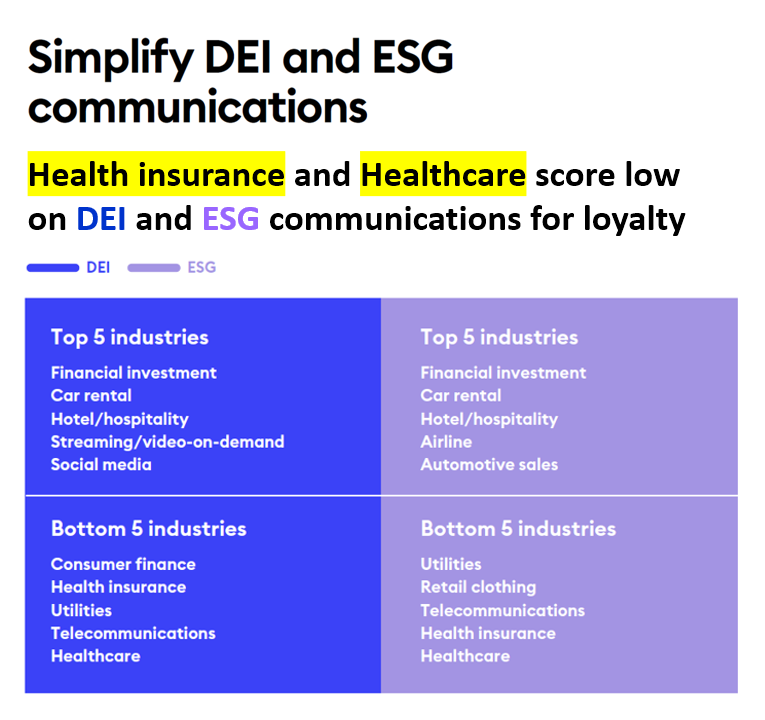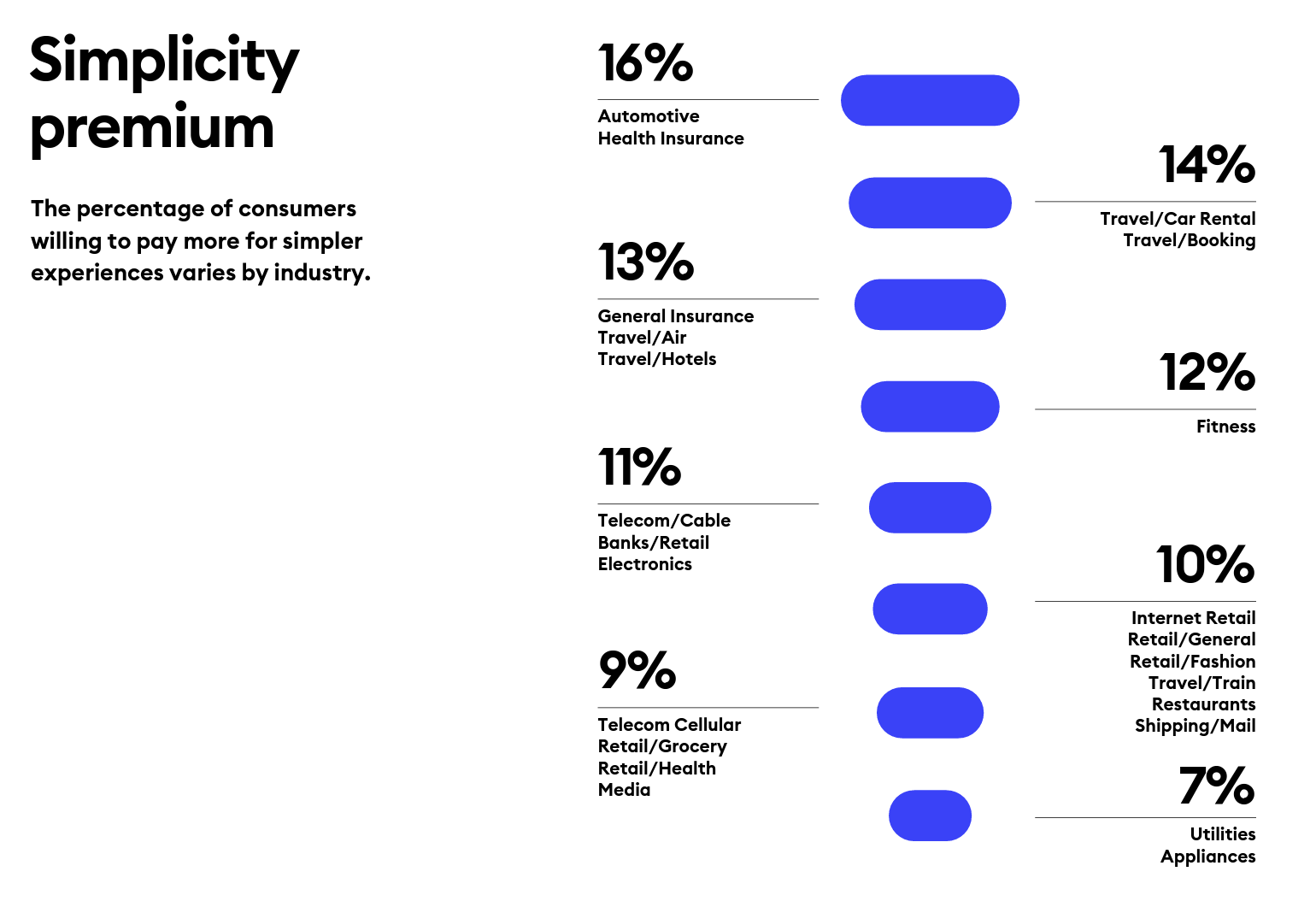“Simplicity is the ultimate sophistication,” Leonardo DaVinci wrote through his lens on innovation.
Simplicity can be a transformational cornerstone of health/care innovation, we learn from Siegel+Gale’s report on the World’s Simplest Brands Tenth Edition (WSBX).
Siegel+Gale found the most consumers are willing to pay more for simpler brand experiences and are more likely to recommend a brand for those simpler experiences, as well.

Across the 15,000 consumers the firm polled globally (across nine countries), five key factors underpin peoples’ experiences with the enchantingly “simple” companies: they are,
- Easy to understand
- Transparent and honest
- Caring for and meeting consumers’ needs
- Innovative and fresh, and,
- Useful
The firm’s annual report considers consumers’ simplicity perspectives for over two dozen industries, including four directly related to health/care experiences: health insurance, healthcare, retail health, and fitness, along with every other consumer touchpoint in the commercial/private sector. You can see the various industries covered in the chart comparing simplicity scores globally and among U.S. consumers specifically.
As the heatmap chart illustrates, health insurance ranks relatively low in peoples’ simplicity lens, akin to general insurance, media, and automotive, and below booking travel (air, train, car rental), and social media. U.S. consumers perceive these industries to be more complex to deal with than others such as grocery, appliances, electronics, restaurants, and retail overall. Note that retail-health is ranked in the most-simple cohort of businesses.
Why care about simplicity? Because there is a premium for those organizations that deliver streamlined experiences that are easier to navigate then consume: for health, Siegel+Gale calculate a 16% greater lift of consumers willing to pay more for simpler experiences for health insurance. There’s a 9% increase of consumers willing to pay more for simpler experiences related to their health care services, and a 12% lift for the fitness industry. Siegel+Gale term this the “simplicity premium.”
Think of it as an ROI on delivery simplicity to health care experiences.

This year, Siegel+Gale gauged consumers’ views on DEI and ESG communications across all of the industries. Note that health insurance and healthcare both rank in the bottom five industries when it comes to consumers’ perceptions on DEI and EST communications — eroding peoples’ loyalty to companies operating in those industries.
Health insurance and healthcare rank low here with consumer finance (think red-lining in mortgage and banking companies), utilities (think energy prices in the winter), telecomms (for phone and connectivity bills), and retail clothing (in ESG, thinking fast-fashion and sustainability).
So you’re wondering who are the Top 10 U.S. companies for simplicity in the eyes of U.S. consumers?

They are Whole Foods, the US Postal Service, Lyft, UPS, Burger King, Dunkin’, Trader Joe’s, Amazon, Old Navy, and Google.
Note Siegel+Gale’s observation here that, “Industry scores signal (consumers’) continued desire to shake isolation: Restaurant, hotel and travel booking industries had significant increases globally.”
I’ll also call out S+G’s note on Lyft’s 49-spot rise in the U.S. ranking: that, “Sharing is caring,” adding that Lyft has continued to expand its healthcare business to link patients needing transportation — a key social determinant of health and care access — to doctor’s appointments, dialysis sessions, mental health services, and college student health services.
Health Populi’s Hot Points: S+G point out that “simplicity disrupts industries,” illustrating that mantra with this informative timeline on simple brands doing innovative things in their sectors.

We start this simplicity journey in 2010 here, with the launch of the iPad, Instagram and Uber, moving to Airbnb disrupting hotels and hospitality, Zoom launching after Lyft, and so on.
By 2020, the pandemic-disruption was the opportunity for 3 in 4 U.S. hospitals to use telemedicine, the food delivery market to explode, and eCommerce to be used in households never before ordering online.
Consumers — as patients and health care payors — crave simplicity, and are loyal to those organizations that support convenience and ease in daily lives which are stressed and, often, depressed.
Let’s listen to Leonardo once again, who also wrote,
“I have been impressed with the urgency of doing. Knowing is not enough; we must apply. Being willing is not enough; we must do.”
Leonardo’s advice here, to me, extends to many aspects of life right now. For health care, it’s about bolstering access, equity, and comfort to all health citizens.





 I am so grateful to Tom Lawry for asking me to pen the foreword for his book, Health Care Nation,
I am so grateful to Tom Lawry for asking me to pen the foreword for his book, Health Care Nation,  I love sharing perspectives on what's shaping the future of health care, and appreciate the opportunity to be collaborating once again with Duke Corporate Education and a global client on 6th May. We'll be addressing some key pillars to consider in scenario planning such as growing consumerism in health care, technology (from AI to telehealth), climate change, and trust -- the key enabler for health engagement or dis-engagement and mis-information. I'm grateful to be affiliated with the corporate education provider
I love sharing perspectives on what's shaping the future of health care, and appreciate the opportunity to be collaborating once again with Duke Corporate Education and a global client on 6th May. We'll be addressing some key pillars to consider in scenario planning such as growing consumerism in health care, technology (from AI to telehealth), climate change, and trust -- the key enabler for health engagement or dis-engagement and mis-information. I'm grateful to be affiliated with the corporate education provider  Thank you FeedSpot for
Thank you FeedSpot for